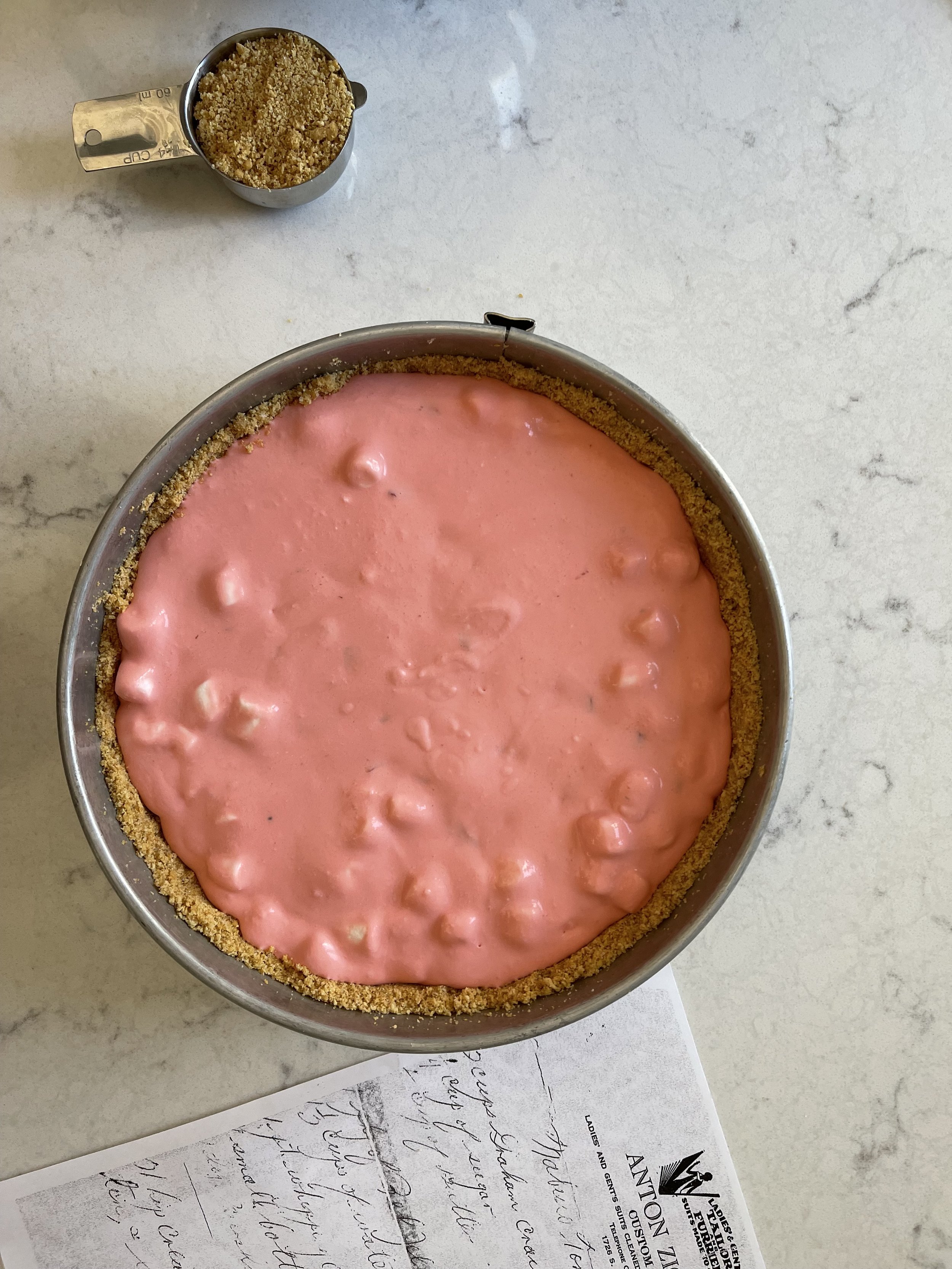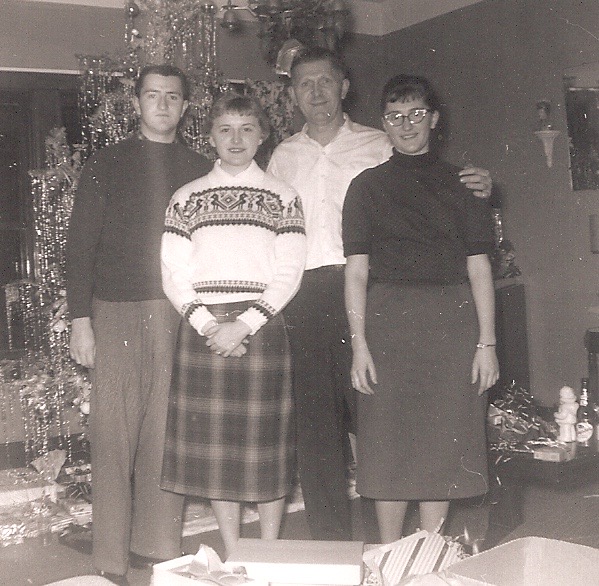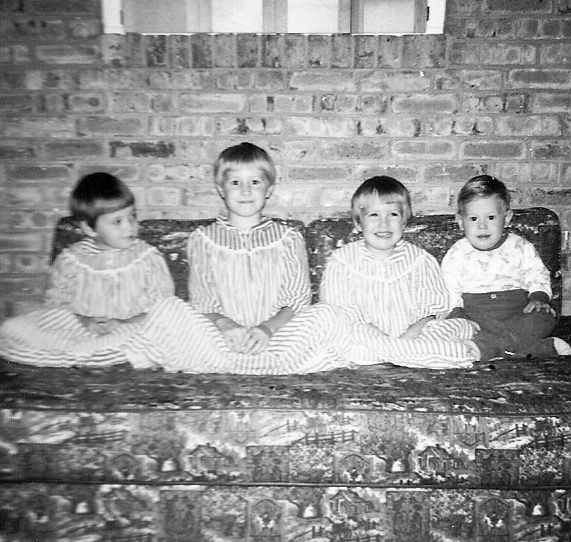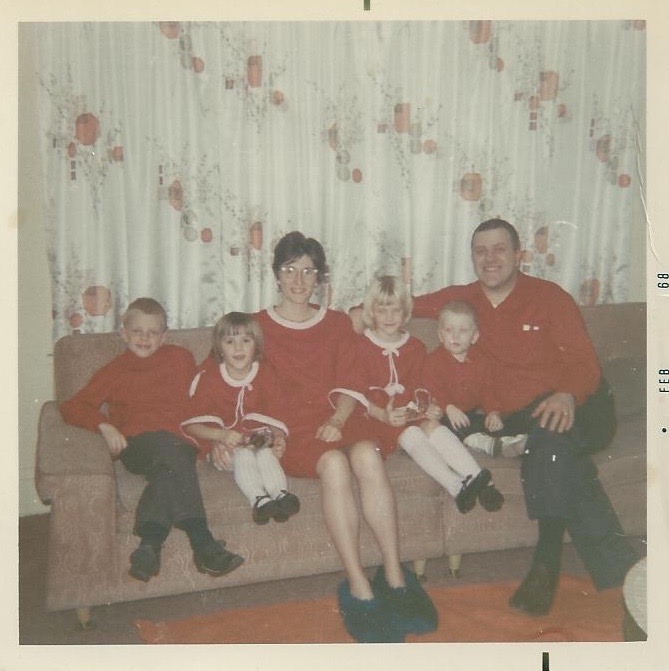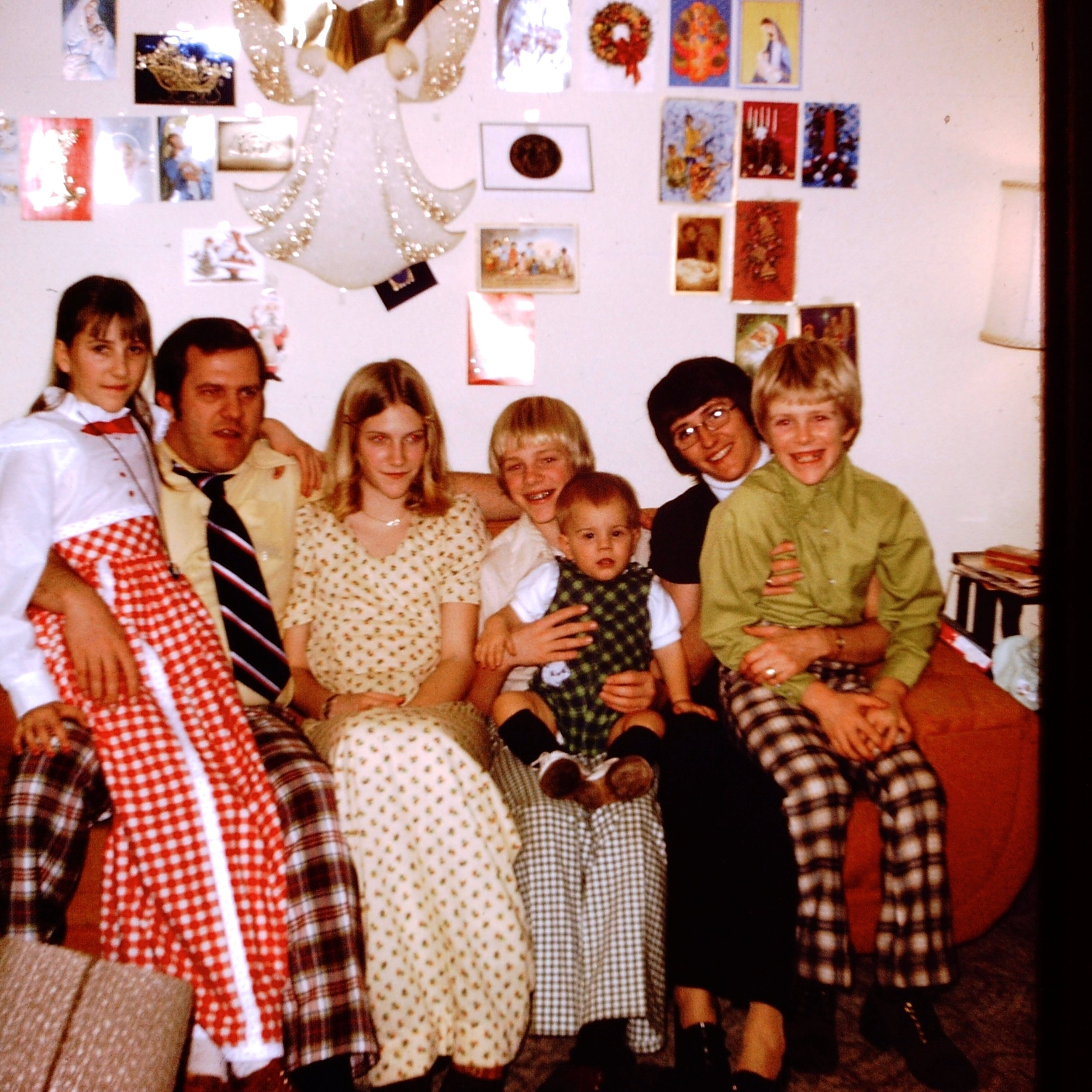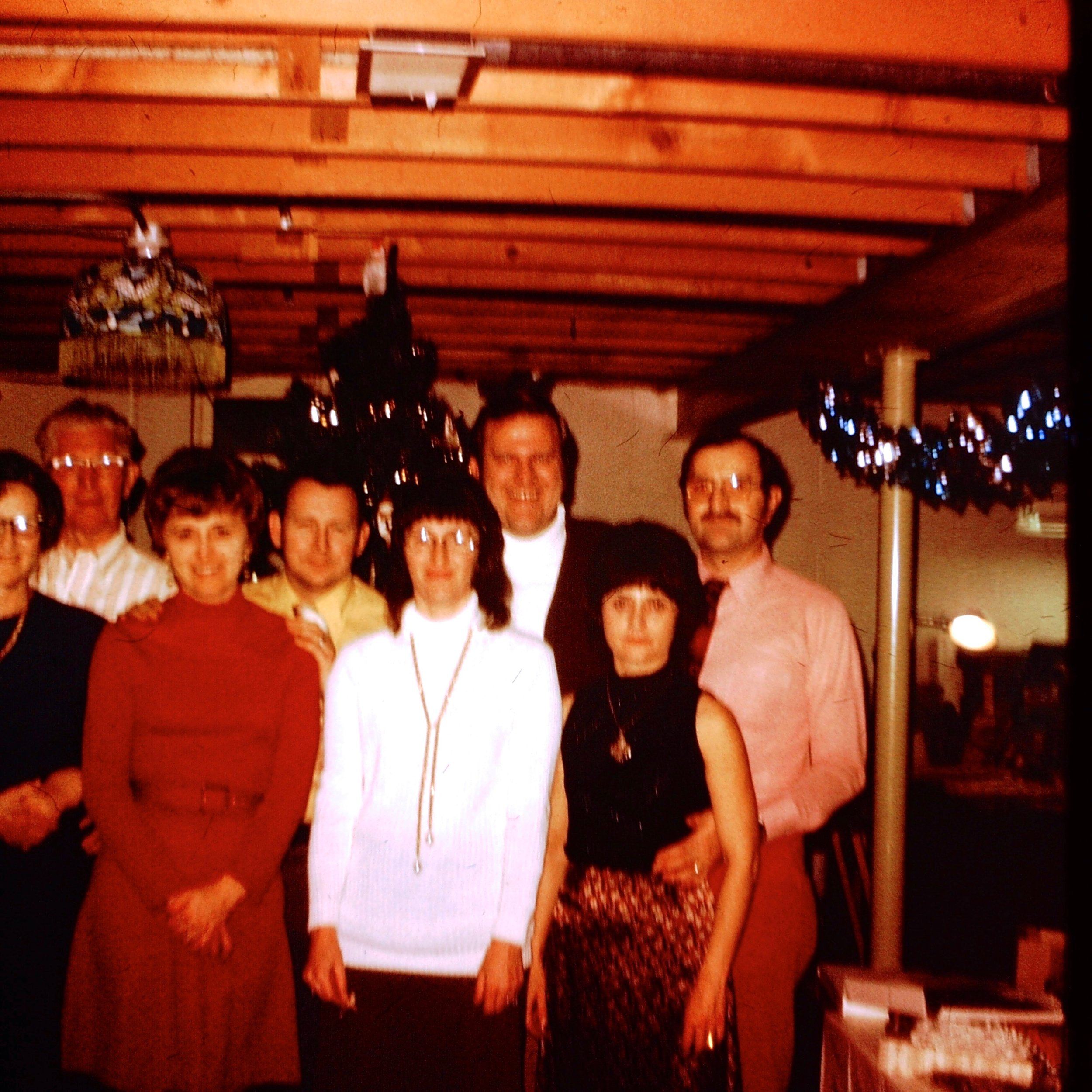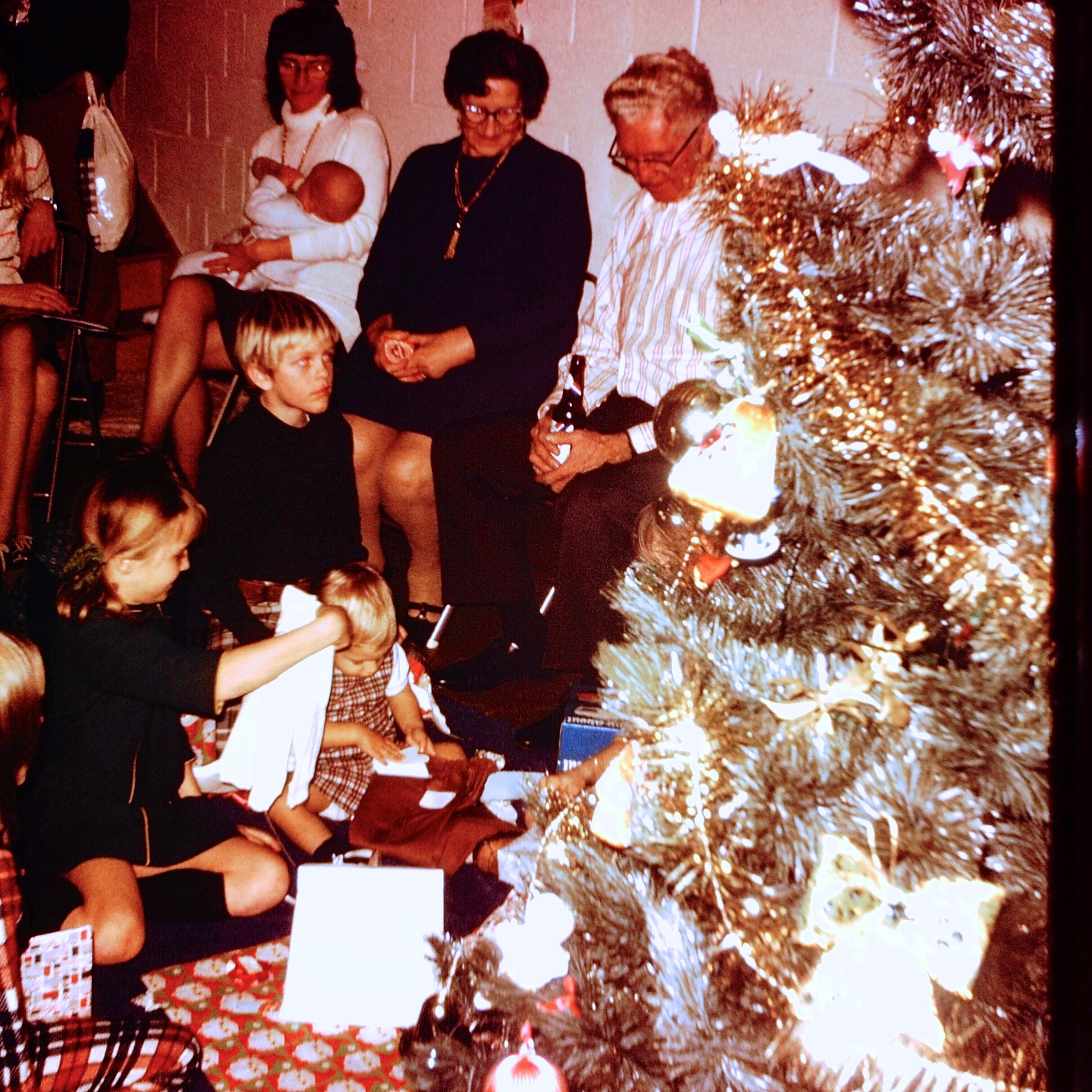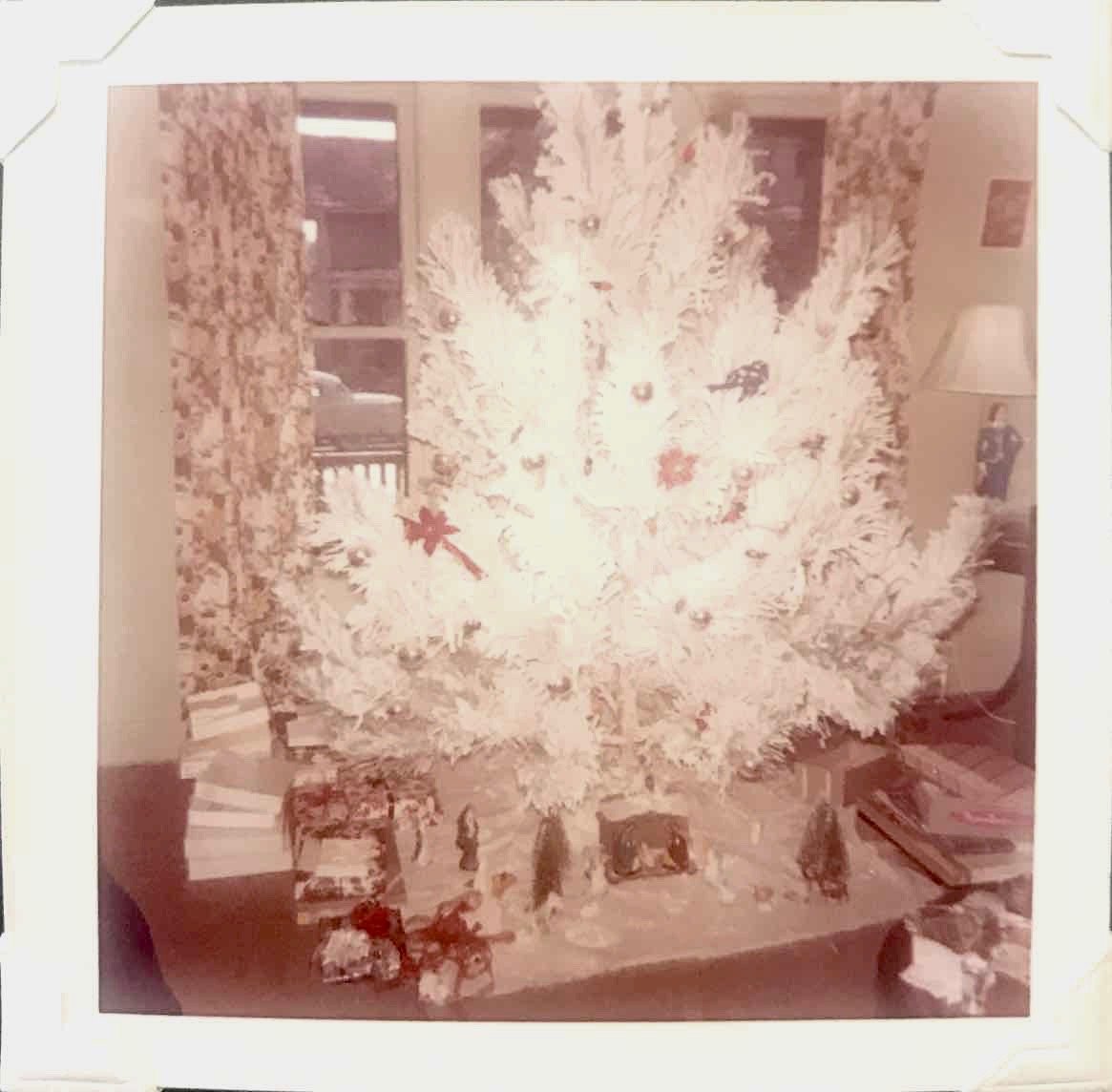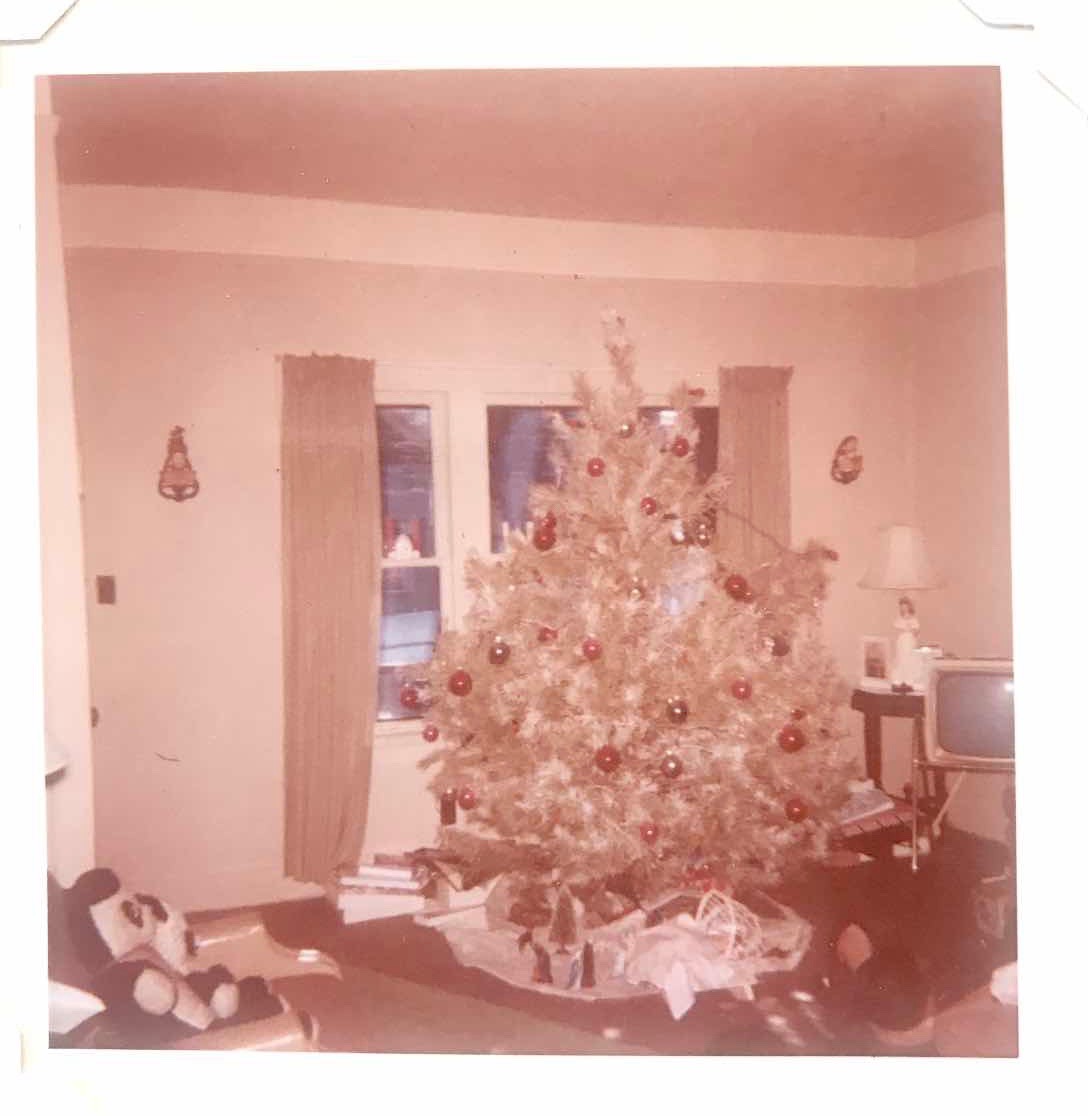John Penne, circa 1942
While organizing my recipes I came across this one from my Great Uncle, Johnny Penne, and knew immediately it should join the “Family Recipes” on this blog. However, after reviewing the recipe, which is written in Johnny’s hand, I could see it was clearly abbreviated AND unreadable on the left margin! Luckily Google provided many similar recipes filling in the gaps.
Uncle Johnny was a mess sergeant during World War II and this was a mess hall favorite! It’s definitely a retro recipe and many of you most likely have tasted a similar dessert. Gelatin has been around since 1845 but it wasn’t until 1897 when a cough syrup manufacturer began experimenting with gelatin that the brand Jell-O was born. Personally, dessert recipes similar to the one below (or Jell-O shots!) should be the ONLY way Jell-O should be used. Take my word on this as someone who lived through the “savory” Jell-O phase before the 1980’s when cooks added coleslaw, carrots, olives, shrimp etc. to unpalatable concoctions. Many a time I sat at the dinner table wondering why my Mom ruined the Jell-O by adding carrots or fruit cocktail! Plain Jell-O in a bowl with whipped cream, that’s how to serve it Mom!!! haha
After reading other similar recipes online here is my extended and more complete recipe, final result photos included! Please comment if you try Uncle Johnny’s Nabisco Torte! Hey it’s way better than Jell-O and carrots!!
For other stories on John Penne and his life check out these links to my blog.
https://www.treeofmanyleaves.com/treeofmanyleaves/2015/02/the-tavern_15.html
https://www.treeofmanyleaves.com/treeofmanyleaves/2015/02/pennes-haven.html





